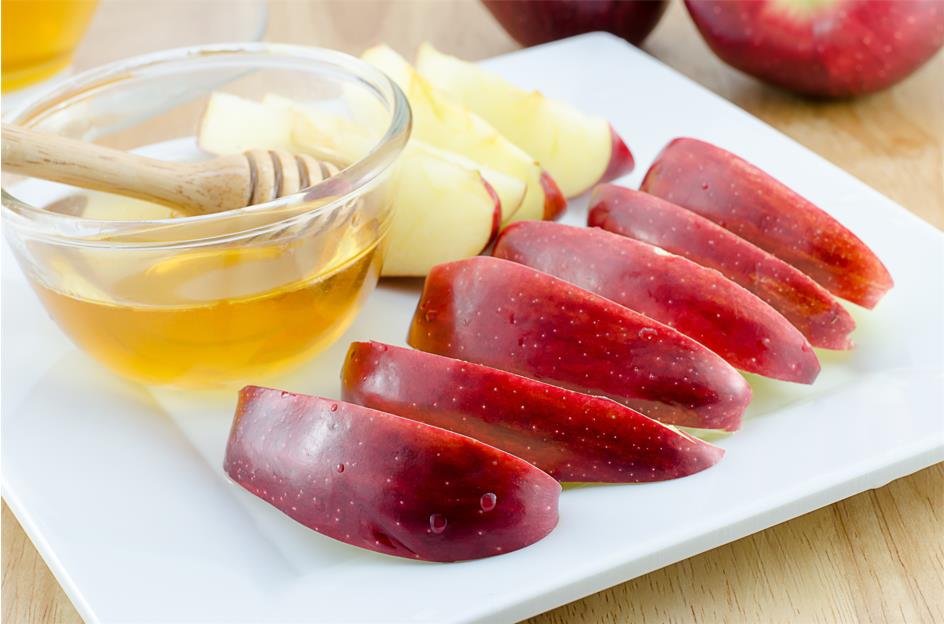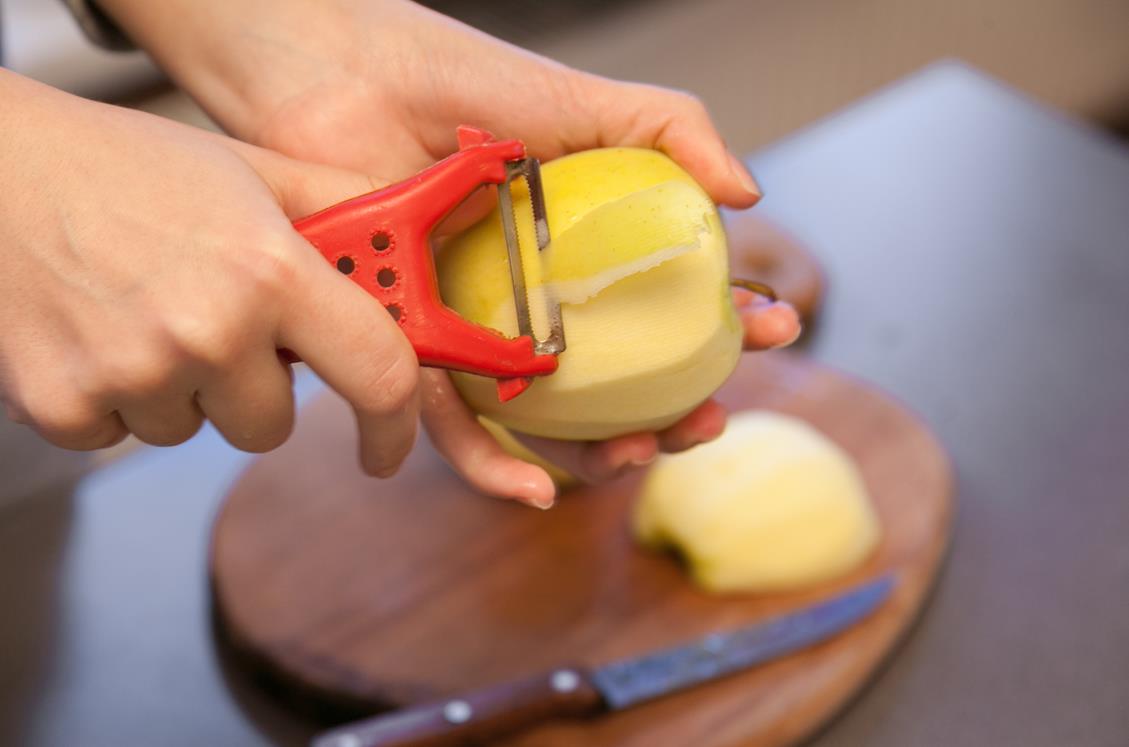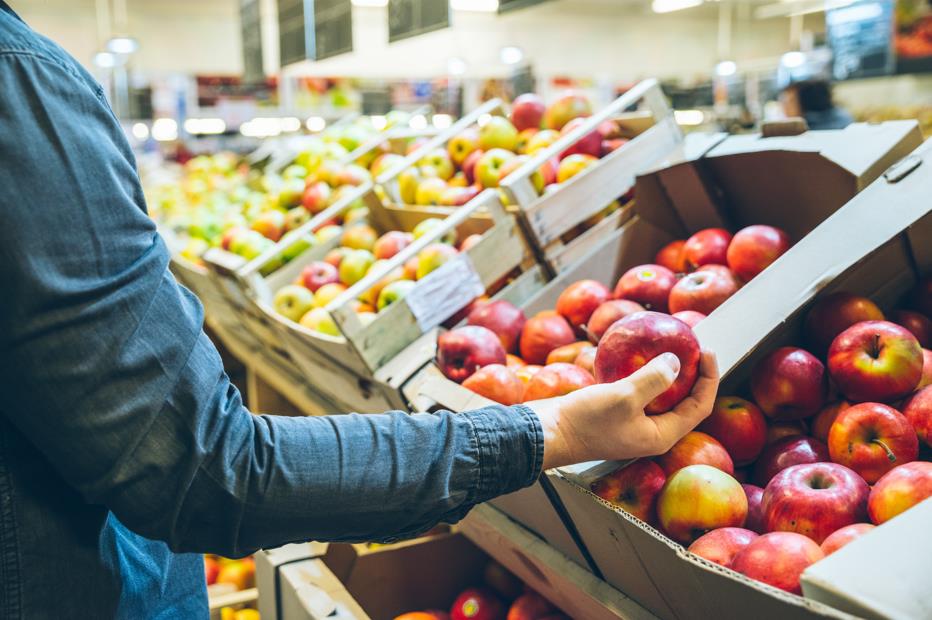Apples are one of the most popular fruits. It’s the second most popular eaten fruit in the United States, second only to bananas. Eating apples as a whole is a favorite and mid-day snack for many.
While it’s simple and easy enough to bite on apples, cutting can pose a challenge for some. Slicing an apple can indeed get tricky with the core involved, but it doesn’t have to be. In this article, we will explain everything you need to know about cutting an apple, preventing them from turning brown, proper storing methods, and more.
Table of contents
Preparing the apple
All ingredients must be clean before cutting, and this is no different for apples. There is a lot of dust and dirt that the eyes can’t see that sticks to apples on the store shelves. Wash the apples under running water and rub them with light pressure to get rid of any dirt.
After they’re ready, all you will need is a stable cutting board and a sharp paring knife to slice them. You can always use your favorite chef’s knife to go with it as well.
How to slice

Sliced apples are the way to cut them for fruit bowls and baked apples. Here is how you can slice apples easily.
- Keep the apple upright by placing the top or bottom on the cutting board.
- Hold the apple nicely and cut it roughly half an inch away from the stem on both sides. Imagine where the core is, and avoid cutting through it.
- Place the rest of the apple lying flat on the cutting board and cut the sides. Again, avoid the core.
- Now, all you’re left with is the core. You can throw it in the garbage or use it to make your own apple cider vinegar.
- Start slicing the apples with the flat side down. The apples should be thinly sliced but not too thin as they can break up.
Handpicked for you
True cutting power in the palm of your hand
How to dice
Whether cinnamon apples or fried apples, many recipes call for diced apples. Here is how you can quickly dice apples.
- Cut the apple into quarters.
- Remove the core carefully. Do this slow if you’re not confident.
- Cut the quarters again in half. If you want the apples to be thicker, you can skip this.
- Place the apples on their side and start dicing. Also, you can make an additional horizontal cut in the middle to get smaller diced apples.
Cutting apples with style
Other than slicing or dicing an apple, you can get creative with it. Like carving a pumpkin for Halloween, you can turn apples into different shapes. Although these are mainly made for serving and plating purposes, there is a whole world of apple carvings, like cutting them into edible swans.
How to peel an apple

The skin of the apple adds flavor to the fruit, but some recipes call for them to be peeled. You can peel an apple easily using a vegetable peeler. Even though you will remove most of the pesticides and dust by peeling the apple’s skin, you still need to wash the apple before peeling
How to use a peeling knife
Surely, you can use a peeler to peel an apple, but it’s also possible to get help from a peeling knife, also known as a paring knife. Here is how to peel an apple using a peeling knife.
If you’re peeling an apple to eat it as a whole, you will want to remove the stem and blossom ends. Do this by placing your thumb on the ends and circling the apple with the paring knife’s tip.
Finally, start peeling the skin by holding the paring knife’s blade and turning the apple as you peel the skin rather than moving the knife around it. When peeling an apple for the first few tries, it’s normal to peel too deep. As you get used to it, you will get better at it.
How to prevent cut apples from turning brown?
When you cut an apple, it gets in contact with the air and slowly starts to oxidize. This oxidation poses a significant problem when preparing pounds of apples for cakes, pies, and other recipes. Since you won’t be able to go through a bunch of apples instantly, you’ll need ways to prevent it from turning brown while they wait on the countertop.
There are a few ways to prevent apples from browning. The easiest way to keep them as they are is with the help of some salted water.
Add a teaspoon of salt for every two cups of water and toss the cut apples into the mix. This will get in the way of oxidation, but undoubtedly, there will be a slightly salty taste that comes with it afterward. Rinse the apples before eating or serving to get rid of the salt.
Another method to prevent apples from turning brown is to add lemon juice. You can squeeze some lemon juice on the cutting board while slicing apples. The same as the saltwater, the lemon will smear its flavor onto the apples. You can follow the same step – rinsing the apples – to eliminate it.
Storing cut apples
The biggest challenge with storing cut apples is the oxidation causing them to rot. Since you already know how to get around apples from turning brown, one thing you will need to do differently is drain much of the water.
Let the apples soak in the saltwater solution for about five minutes, drain the water, squeeze a little lemon juice, and mix the cut apples. Later, put the apples in an airtight bag and store them in the refrigerator for up to a week.
Selecting good apples at the store

We can buy fresh apples year-round, but selecting good apples requires some knowledge and familiarity with them. Here are a few tips on selecting good apples.
- Ripe apples are firm without specific spots, exceptionally soft to the touch. Soft apples don’t necessarily translate to bad as some apple varieties aren’t so tight, so know the type of apple you’re examining before eliminating it based on the firmness.
- There shouldn’t be bruised or indent parts after pressing on the apples lightly.
- Take a look at the apple in its entirety to see if there are any visible signs of rotting.
- Smell the apples to see if it has a pleasant scent. There shouldn’t be any off scents coming from the apple.
- The color should be bright, or according to the qualities you would look for in that type of apple.
Apple varieties
In the United States alone, there are more than 100 varieties of apples grown. Here are the popular types of apples, to name a few.
- Granny Smith: A perfect apple variety for baked apples; Granny Smith apples are mostly lime green and aren’t hard to come by at any store.
- York: With one side smaller than the other, these apples are easily recognizable. The flavor of York increases as the fruit matures, becoming sweeter and mellow over time.
- Baldwin: Once the most popular apple variety, a freeze in 1934 wiped out an overwhelming majority of its trees. Baldwin apples have been growing in popularity and supplies in recent years and are primarily used for baking.
- Golden Delicious: One of the most popular apple varieties, Golden Delicious has a vibrant flavor with its golden yellow to pale green appearance.
- Gala: A cross between Golden Delicious and other apple varieties, Gala apples are available year-round and are sweet and soft with orangish, pale red color.
- Honeycrisp: The juiciest of the varieties mentioned above, Honeycrisps are crunchy and a favorite for lunchboxes, but they bruise a bit easier.
Apple nutrition facts
Apples are stuffed with vitamins, antioxidants, and fiber. Here are the nutrition facts for a medium (182 g) apple. It’s a great resource for people on diet as well.
- Calories: 95/one serving
- Carbs: 25 grams. Carbohydrates in apples come from sugars, but they won’t cause spikes in your blood sugar levels. Despite having a considerably high amount, carbs in apples are good carbs.
- Fiber: 4 grams. The insoluble fiber in apples adds bulk to the stool, helping move food quickly through the digestive system.
- Vitamin C: 14% of the RDI. Vitamin C boosts the immune system and is necessary for the repair and development of all body tissue. Most of the Vitamin C in apples is just beneath the skin. If you’re planning on loading Vitamin C, make sure to eat apples with the skin.
A simple fruit that we come by almost every day, apples are one of the healthiest snacks out there. Plus, they taste amazing! The nutrition facts may not show it clearly, but what’s more about apples is that they lower the risk of diabetes, support good gut bacteria, are good for the bones, get in the way of mental decline, and maintain healthy skin.
FAQs
Are apples good for dogs?
Apples are especially an excellent snack for older dogs. Just a few apple slices provide an adequate amount of Vitamin C and fiber to pups. However, avoid feeding your dog the core and excessive amounts of apples as it can lead to an upset stomach and diarrhea.
Are apples keto-friendly?
In a ketogenic diet, or shortly known as the keto diet, apples have no place as they are considered high in carbohydrates. A medium apple has roughly 25 grams of carbs, which is not allowed on a keto diet. Try raspberries, avocadoes, and other similar fruits low in carbs to put down your hunger for apples.
How many apples are in a cup?
A medium apple is about 1.5 cups. About 3/4 of an apple is one cup. However, this largely depends on the size of the apple. You can have two apples in a cup or two cups in an apple. It all comes down to the apple’s size.
With plenty of uses and benefits, apples are one of the most prominent fruits in the world. Great fruits deserve great knives. Head over to our handmade kitchen knives collection to see some of our latest offers.












